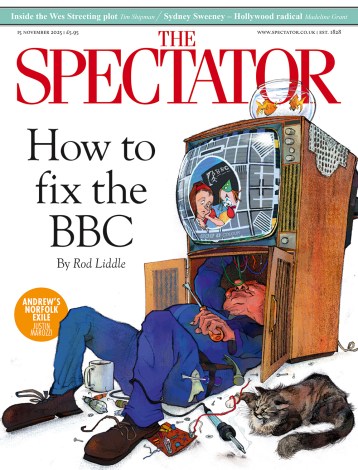The closest thing we have to a native Christmas tree is the often broccoli-shaped Scots pine (Pinus sylvestris). But the Norwegian spruce (Picea abies) is the classic Christmas tree. Despite it being present in Britain during the last interglacial period, it is not considered native. It did not return to Britain after the most recent thaw, waiting instead for human assistance in the 16th century. And it wasn’t until 1841, when Prince Albert brought a Norwegian spruce across from the European mainland to remind him of Christmas in Saxe-Coburg and Gotha, that the Christmas tree became a traditional part of our celebrations.
The early Vikings also placed a tree at the centre of their midwinter festivities. I’m currently shooting Netflix’s Vikings: Valhalla
and it has focused my attention on Viking tree worship. The Viking midwinter festival Jóloblót celebrated the rebirth of the Sun. It later became known as Yule. Central to these celebrations was a ‘Yule tree’ and ‘Yule log’. The tree represented eternal life with its evergreen needles, while the log, which was set alight, stood for the need for warmth in the world. When King Haakon I of Norway began to Christianise his people in the 10th century, Yule came to coincide with Christmas. The Christmas tree was one of the pagan elements that remained.
It’s likely the Vikings also used the Norwegian spruce for their Jóloblót trees, but they put it to other uses, too. They used the edible leaf tips, which are high in Vitamin C, to make beer and loaded their longships up with it to help stave off scurvy.
During the first 25 years of its life, the Norwegian spruce grows with a striking rapidity. It can grow up to a metre each year, and possesses a beautifully straight grain. Spruce timber, being a pale cream colour, is often referred to as ‘whitewood’. It is very versatile and perfect for wooden flooring, furniture and paper. Every year, 16 lorry loads of Norwegian (and Sitka) spruce from the Lake District are turned into the fences for the Grand National at Aintree.
During the 1800s, boatloads of Norwegian spruce were shipped from Oslo to Cardiff to be used for pit props in Welsh coal mines. Such were the trade ties between the Welsh and the Norwegians that in 1868 the Lutheran church of Norway built a church on a plot of Cardiff dockland. It was clad in white-painted wood and is known as the Little White Church. One of its congregation, Harald Dahl of Sarpsborg, Norway, had moved to Cardiff to set up a shipping firm to capitalise on the trade between the two countries. His son, Roald, was to become one of our greatest children’s authors. Norwegian spruce helped give us Roald Dahl.
It has also given us music. One genetic variant of the Norwegian spruce is known as the ‘hazel spruce’, which makes a fantastic tone-wood. Antonio Stradivari sought it out to make his legendary violins. There’s even a hazel spruce forest in the Dolomites called Foresta dei violini: the forest of violins.
Regardless of whether the Norwegian spruce is native to Britain, it has provided us with divine music, children’s literature, the Grand National and a way for sailors to avoid scurvy. And, no Christmas, Yule or Jóloblót would be complete without this tree. Skål! God jul!






Comments